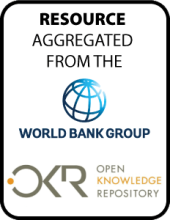Land Library Search
Through our robust search engine, you can search for any item of the over 73,000 highly curated resources in the Land Library.
If you would like to find an overview of what is possible, feel free to peruse the Search Guide.
/ library resources
Showing items 1 through 9 of 98.Exurban development is the fastest growing land use across the United States (US). Its prevalence on the East Coast is susceptible to natural disaster events such as hurricanes and nor’easters.
This paper provides an overview of the last 40 years of use, and in many cases abuse, of the natural resources in Catalonia, a country that is representative of European countries in general, and especially those in the Mediterranean region.
A framework was developed to elucidate (1) the drivers of land degradation, (2) pressures, (3) local impacts and vulnerabilities and (4) adaptation strategies.
Over the past 30 years, real GDP in Ghana has more than quadrupled, and in 2011 the country joined the ranks of Lower Middle-Income Countries (LMICs).
This note is part of an Action Notes series and provides guidance for governments on how to create an investment climate that is conducive to attracting high-quality, responsible investment in agriculture.
Integrated Landscape Approaches for Africa’s Drylands presents emerging findings on the importance of moving beyond single-sector interventions to embrace integrated landscape management that takes into account the health of the ecosystems that support human livelihoods and contribute to the resi
This paper investigates how land size
measurements vary across three common land measurement
methods (farmer estimated, Global Positioning System (GPS),
and compass and rope), and the effect of land size
Agricultural water management projects
that take an inclusive, participatory gendersensitive
approach at all levels of the project
cycle help increase project effectiveness and
improve account of livelihood concerns of
women and the rural poor. Participatory
China is considered one of the most seriously eroded countries in the world. The
many causes of this degradation can be divided into natural, human-induced and root causes.
The consequences of watershed degradation are severe and reach even beyond the country’s





